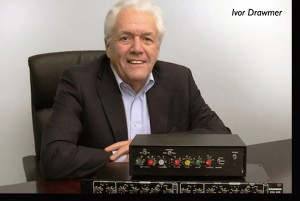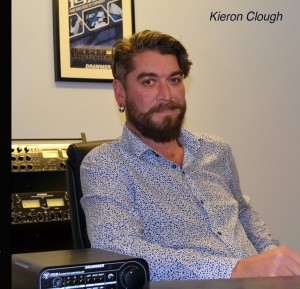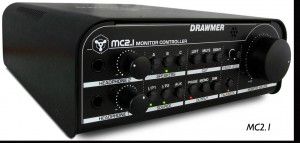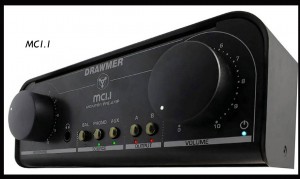Drawmer Company Profile
Drawmer, Experts in the Concrete Science and Mystic Art of Analog Circuit Design,
Paves the Way for the Future of Pro Audio
 Drawmer’s long history, now closing in on forty years, is full of audio engineering innovations pioneered by the at-once practical and visionary Ivor Drawmer. Among these innovations are the first frequency-conscious gate, the first single-input channel, the first stable reimagining of the Pultec and Fairchild equalizer sound, and the first frequency-conscious compression circuit. The Drawmer Pro Series (which includes the industry standard DS201 gate and DL251 spectral compressor) and the Drawmer 1960s Series (which includes the industry standard 1960 tube mic-pre/compressor and 1961 tube equalizer) changed the landscape of live sound and studio recording when they were introduced, and have continued to sell year after year and decade after decade. As it has from the very beginning, Drawmer continues to manufacture all of its products in the UK using locally-sourced components.
Drawmer’s long history, now closing in on forty years, is full of audio engineering innovations pioneered by the at-once practical and visionary Ivor Drawmer. Among these innovations are the first frequency-conscious gate, the first single-input channel, the first stable reimagining of the Pultec and Fairchild equalizer sound, and the first frequency-conscious compression circuit. The Drawmer Pro Series (which includes the industry standard DS201 gate and DL251 spectral compressor) and the Drawmer 1960s Series (which includes the industry standard 1960 tube mic-pre/compressor and 1961 tube equalizer) changed the landscape of live sound and studio recording when they were introduced, and have continued to sell year after year and decade after decade. As it has from the very beginning, Drawmer continues to manufacture all of its products in the UK using locally-sourced components.Nevertheless, Ivor and his crack team of seasoned engineers will not rest on their accomplishments, however historic they were and however lucrative they continue to be. Drawmer is leveraging decades of deep experience in the concrete science and the mystic art of analog circuitry design to build cost-effective, yet uncompromising, solutions to the challenges contemporary audio engineers face, now shin-deep in the 21st Century. “The common denominator of all our products, both old and new, is solid sound quality – the kind you can almost reach out into the air and grab – crossed with functionality that solves audio engineering problems quickly and intuitively,” explained Kieron Clough, a Drawmer engineering veteran who has worked closely with Ivor for nearly a quarter century.
 “No one in our shop, including Ivor, is afraid to say we’re still learning,” Clough said. “The new 1970s range, which includes the 1973 stereo, three-band FET compressor and the 1978 stereo tone-shaping FET compressor, were inspired by the now-discontinued Signature series, which was a great-sounding, but very high-priced collection of tools. We knew engineers wanted the Signature series’ tone and functionality, but as elements in the Signature series’ boutique supply chain disappeared, we sought to capture its sound and functionality with a design that would be more cost-effective. The 1973 embodies the spirit, sound, and functionality of the Drawmer S3, at one-third the price! We’re very pleased with this accomplishment.”
“No one in our shop, including Ivor, is afraid to say we’re still learning,” Clough said. “The new 1970s range, which includes the 1973 stereo, three-band FET compressor and the 1978 stereo tone-shaping FET compressor, were inspired by the now-discontinued Signature series, which was a great-sounding, but very high-priced collection of tools. We knew engineers wanted the Signature series’ tone and functionality, but as elements in the Signature series’ boutique supply chain disappeared, we sought to capture its sound and functionality with a design that would be more cost-effective. The 1973 embodies the spirit, sound, and functionality of the Drawmer S3, at one-third the price! We’re very pleased with this accomplishment.”Indeed, approximately ninety-percent of Drawmer’s 19-inch rack gear shares components, including circuitry, power transformers, connectors and metalwork. That tremendous economy of scale combines with the company’s often twenty-plus year relationship with its UK-based suppliers to keep Drawmer’s prices reasonable. “We take our design for manufacturing very seriously too,” said Clough. “Having every product built from scratch from a bare printed circuit board to the finished product means simplicity and ease of build must be considered at every stage. Of course it helps that we have a great team of loyal staff who know the products inside out, the majority of whom have been here for between fifteen to thirty years!”
That said, Drawmer is comfortable with its place in the market and has no aspirations to compete with “entry-level” or “MI-grade” audio gear, which is invariably manufactured in high-volume, multi-use facilities in Asia. Even Drawmer’s lower cost gear, such as the MX Pro Series, still uses the same UK-sourced components and UK-manufacturing. “I don’t think there will ever be a point where we are making $100 compressors – and we’re not competing with companies that do,” said Clough. “We strive for a fair price for a product with an innovative feature set that sets itself in a bracket above any of the ‘built-to-a-low price-point’ products.”
Of course, the plug-in world is replete with multiband compressors, and the 1973’s functionality is a reflection of that world (its sound, of course, is vastly better). The 1978 FET compressor, Drawmer’s latest high-end recording product, takes the flexibility of the software world to the next level by giving users different analog circuit paths (“characters”) as well as variable saturation. In essence, the Drawmer 1978 rewards its owners with the flavors of a whole rack full of different hardware compressors. “We always try to give Drawmer users something extra,” Ivor said, “and the 1978 succeeds in a big way.” As the first handful of reviews roll in for the 1978, the “cons” column has remained completely empty – an amazing feat!
 While continuing to pioneer such pre-amplification, dynamics, and equalization solutions for the modern challenges of live and recorded sound, Ivor and his team of engineers are applying their deep understanding of high-quality, cost-effective analog circuit design in other pro audio arenas as well. For example, Drawmer’s new MC2.1 monitor controller and MC1.1 monitor preamp give engineers the kinds of monitoring options they need to do serious work with sound quality that inspires productivity without sugar-coating anything. “Monitor controllers are something we were always interested in improving,” said Ivor. “It was clear that the super high-end players in the market provided the right features, but at a very high cost, and that the entry-level players didn’t provide enough features, nor sound quality worthy of a professional. We applied our talents to give Drawmer users the right sound and feature set without breaking the bank.” After releasing the MC2.1, Drawmer learned that the Chinese hi-fi market was buying them up… but also crying out for the same quality preamp without some of the MC2.1’s features that weren’t useful for hi-fi. Drawmer responded with the smaller MC1.1 and is developing other incarnations for specific markets and end user needs.
While continuing to pioneer such pre-amplification, dynamics, and equalization solutions for the modern challenges of live and recorded sound, Ivor and his team of engineers are applying their deep understanding of high-quality, cost-effective analog circuit design in other pro audio arenas as well. For example, Drawmer’s new MC2.1 monitor controller and MC1.1 monitor preamp give engineers the kinds of monitoring options they need to do serious work with sound quality that inspires productivity without sugar-coating anything. “Monitor controllers are something we were always interested in improving,” said Ivor. “It was clear that the super high-end players in the market provided the right features, but at a very high cost, and that the entry-level players didn’t provide enough features, nor sound quality worthy of a professional. We applied our talents to give Drawmer users the right sound and feature set without breaking the bank.” After releasing the MC2.1, Drawmer learned that the Chinese hi-fi market was buying them up… but also crying out for the same quality preamp without some of the MC2.1’s features that weren’t useful for hi-fi. Drawmer responded with the smaller MC1.1 and is developing other incarnations for specific markets and end user needs. Drawmer’s informal market research, which comes mainly in the form of conversations with end users, dealers, and others in the pro audio universe, suggests that both Drawmer’s flagship hardware and its newer designs are helping studios and engineers differentiate themselves from their peers. “They want to be able to produce something extra with a unique sound – not just off-the rack plug-ins,” said Clough. “One thing Ivor has always said is that no design is ever ‘good enough.’ We get our initial concept and then stick with it until we get it absolutely perfect.” As a consequence, Drawmer’s unique ability to deliver great sound and functionality using UK-manufacturing and UK-sourced components at a price that is fiercely competitive has differentiated – and continues to differentiate – Drawmer in the world of professional audio equipment.
Drawmer’s informal market research, which comes mainly in the form of conversations with end users, dealers, and others in the pro audio universe, suggests that both Drawmer’s flagship hardware and its newer designs are helping studios and engineers differentiate themselves from their peers. “They want to be able to produce something extra with a unique sound – not just off-the rack plug-ins,” said Clough. “One thing Ivor has always said is that no design is ever ‘good enough.’ We get our initial concept and then stick with it until we get it absolutely perfect.” As a consequence, Drawmer’s unique ability to deliver great sound and functionality using UK-manufacturing and UK-sourced components at a price that is fiercely competitive has differentiated – and continues to differentiate – Drawmer in the world of professional audio equipment.